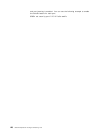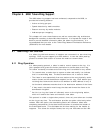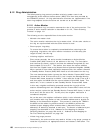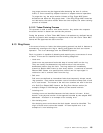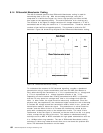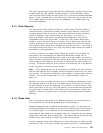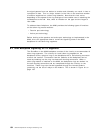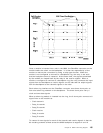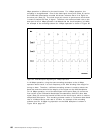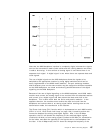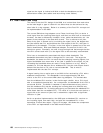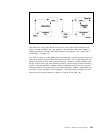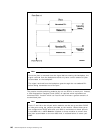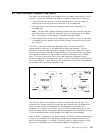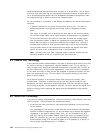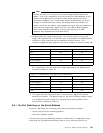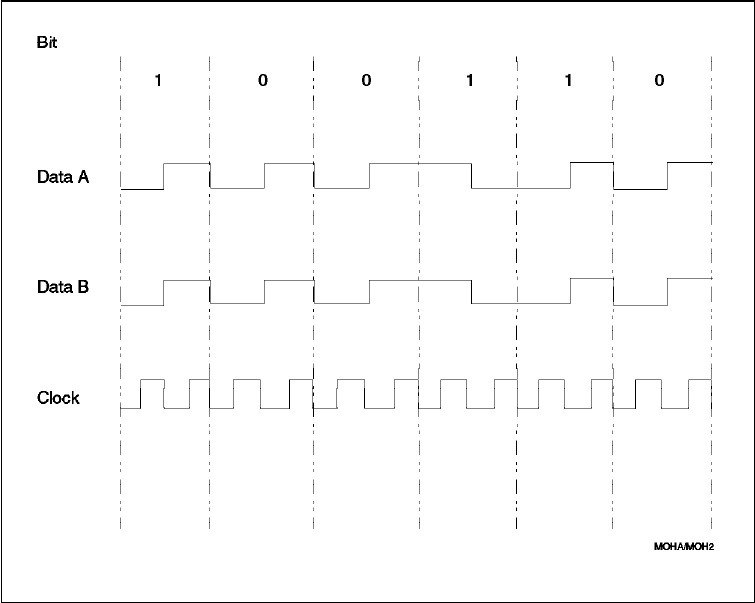
Mbps operation is different for the two bit-rates. For 4 Mbps operation, the
encoding is straightforward. One of the data-signal shunt pairs (Data_A) carries
the Differential Manchester encoded bit stream, whereas there is no signal on
the other pair (Data_B). The clock shunt pair carries a synchronous clock which
is used to sample the Data_A signal. Therefore, the maximum baud rate on the
data pair for the 4 Mbps operation is 8 Mbaud and the clock frequency is 8 MHz.
An example of the encoding scheme for 4 Mbps operation is shown in Figure 82.
Figure 82. 8260 Backplane Signalling for 4 Mbps Operation
In 16 Mbps operation, using the same encoding technique as the 4 Mbps
operation would result in a clock frequency of 32 MHz allowing little margin for
timing or skew. Therefore, a different encoding scheme is used to reduce the
baud rate and thus enhance the integrity of the signal on the 8260 backplane.
For 16 Mbps operation, one of the data-signal shunt pairs (Data_A) carries the
first half-bit of the Differential Manchester encoded data, while the other data
signal (Data_B) carries the second half-bit and the clock signal, which is used to
sample both data pairs. This encoding scheme results in a maximum data baud
rate of 16 Mbaud and a clock rate of 16 MHz. An example of the encoding
scheme used for 16 Mbps ring operation on the 8260 backplane is shown in
Figure 83 on page 137.
136 8260 Multiprotocol Intelligent Switching Hub



